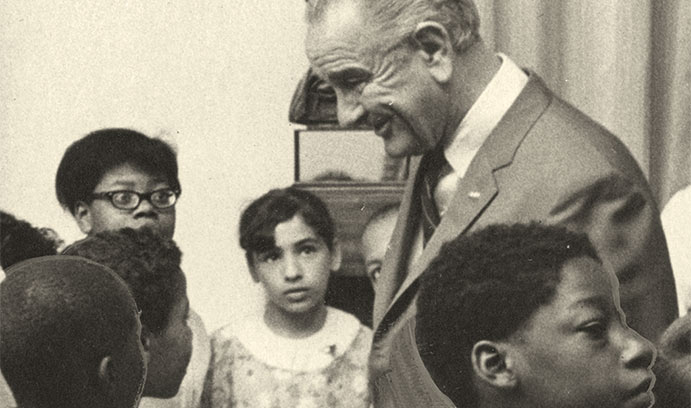Giving Kids a Head Start

President Lyndon B. Johnson fought the 'war on poverty' with programs such as Head Start.
Fifty years ago, President Lyndon B. Johnson declared a ‘war on poverty’ with initiatives that came to include Head Start. Today, the nationwide preschool program for children in low-income families continues to serve 1 million children annually, but it’s not without its critics.
Head Start began as an eight-week summer project to help the children of low-income families prepare for school and to break the cycle of poverty. A brainchild of Sargent Shriver, the project grew quickly into a year-round program that has reached more than 30 million children since its inception. Head Start provides educational services as well as health, social and other services.
In announcing the project in the Rose Garden on May 18, 1965, Johnson spoke of an “awakening” in America to the realization that poverty begets poverty. “Five- and 6-year-old children are inheritors of poverty’s curse and not its creators,” Johnson said. “Unless we act, these children will pass it on to the next generation, like a family birthmark.”
Johnson envisioned poor children getting a head start on their education by learning educational and social skills, with long-term benefits. “This program means that 30 million man-years – the combined life span of these youngsters—will be spent productively and rewardingly, rather than wasted in tax-supported institutions or in welfare-supported lethargy,” Johnson said.
Though Head Start has continued for half a century, there has been lingering debate over its effectiveness, including calls to cut or curb the program, which is funded at about $8 billion annually. Critics argue Head Start has little impact on academic outcomes. (A 2012 federal evaluation showed children’s educational gains had faded by third grade.) Supporters, however, cite other studies that show strong initial gains in the classroom as well as the “sleeper effects” of youngsters thriving later in school and in life because of skills learned.
Today, reforms are under way that aim to strengthen Head Start. In addition to a greater focus on teachers credentials, the organizations, local government agencies and school districts that run programs no longer receive indefinite funding but are on a five-year grant cycle. The most significant change is that low-performing organizations must now compete for new grants. The call for more reform continues.
Posted on:

